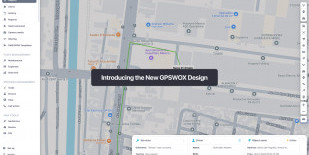

How to install a GPS vehicle tracking system
There are a number of reasons why you might need to install a tracking system on your vehicle. Apart from usual tracking purposes, you can also use it as anti-theft device. In a fleet management business, GPS tracking devices are used to monitor drivers and their driving skills and habits. Also, GPS devices have several professional purposes of use, for example, these devices are indispensable for businesses like car rentals, ambulance services etc.
However, whatever your purpose of using GPS tracking device is, it works flawlessly, and is very easy to install. Once installed, tracking devices work in the conjunction with the advanced global positioning system (GPS) to deliver real-time location of the object. It remotely provides the information of directions, movement, speed and location. A GPS sever stores all the data in a centralized database that can be assessed for future reference. In addition, the advancement of the GPS technology can also reveal the time spent halting at multiple locations. You can also choose to do geo-fencing where the alarm comes into action when the car changes its direction outside the predefined routes.
Installation process of a GPS tracking system:
First Step:
When it comes to install a GPS tracking to your vehicle, the first thing you'll need is to find a power source for it. There are two common ways to provide power to a tracking device. You can use dedicated batteries to power it, or can use the battery of your vehicle to make it functional. Usually, choosing a vehicle's battery to power a tracking device requires you to hire a professional for the installation. On the other hand, dedicated power source makes the process much easier to install and everyone can do it. All that you need to have is the GSP device, a magnet-resistant case as well as a weather-proof case to house it.
Step 2:
After you have decided to go with dedicated batteries to power the GPS tracking device, use the battery cell to feed the power into it. Now place the active device into the case. Choose the area where you want to put the device inside your car in the way that it has no likelihood of being exposed to anyone.
Step 3:
The third step is to test the installed device. After you've placed the case in a safe and hidden area of your car, take it out for a short drive. Note down the speed, the location, and the stop timings yourself. Now check if the case is safely placed where you had put it. After the test drive, use your computer or mobile phone to check the data collected by the GPS tracking device. Compare the data against the notes you have collected manually. If both the data matches, you've successfully installed a GPS device yourself.
If you need more help, please visit www.gpswox.com or contact GPS tracking experts on [email protected]












